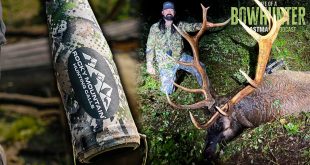Mountain Gobblers – With The onX Hunt App
By Todd Helms
Hunting turkeys in the Rocky Mountain West isn’t the same as hunting them in the South or the Midwest. Sure, their behavior is similar but finding them can be trickier. The terrain and habitat of the West is vastly different from other regions and dictates where birds will be found during different parts of the season. Understanding this and using onX Hunt to remote scout an area will be key to your success on these mountain birds.
Now we do need to get a few things straight, when I say the “West” I’m not talking about the Black Hills of South Dakota or even Wyoming, I do not mean the river bottoms of Kansas or the hills of western Nebraska. Oklahoma and Texas are out too, I’m talking about the Rocky Mountain West and mountain bred gobblers. They are a challenge and quite possibly the hardest turkey in North America to collect.
To be clear these birds are either Merriam’s or Rio’s, maybe even Gould’s, depending on the state and mountain range you’re hunting but the one thing they all have in common is that they call the mountains their home. Sure these birds will winter in river bottoms or on ranches where the snow isn’t as deep and access to food is easier but once that deep snow begins to recede these birds start following that snowline up the mountain and you need to be on their tails if you want to collect one.
Using onX Hunt to identify areas that will meet a gobbler’s needs is pretty straightforward. I look for big wide drainages with water and open, grassy ground on the slopes. Drainages that are super thick with coniferous timber simply don’t hold a lot of birds in my experience. Aspens on the other hand tend to have an open understory where grass gets an early start before the leaves blot out the sun. Turkeys find food in these more open environments and will linger in these areas for days on their way upslope. Look for “open” looking slopes and small side drainages that will often have other food sources as well. This terrain and habitat will be evident in the satellite imagery view using onX Hunt.
Another spot I like to concentrate on are recent burns. It seems that all western wildlife appreciate a good burn as it generates new growth which is high in nutrients. Turkeys are no different and will spend weeks combing a burned area picking away at the smorgasbord of goodies under their feet. The forest fire/wildfire layers in onX Hunt will not only show you old burns but ongoing and recent burns as well which will give you places to look for gobblers in springs to come.
The last thing I look for with my onX Hunt app are out of the way, side draws off of main drainages where birds can escape traffic on the main game and horse trails in the bottoms of large drainages. The trails & rec layers in the onX Hunt app will show you how the trails meander through the vast country of the West and give you a game plan for a day of rambling style turkey hunting. Also, while you’re looking, don’t forget the NWTF layer in onX Hunt, it’s loaded with information right at your fingertips.
Once you’ve got a suitable drainage picked out, trails or no, it’s time to lace up the boots and go find a big old mountain gobbler, my favorite kind.
 Eastmans' Official Blog | Mule Deer, Antelope, Elk Hunting and Bowhunting Magazine | Eastmans' Hunting Journals
Eastmans' Official Blog | Mule Deer, Antelope, Elk Hunting and Bowhunting Magazine | Eastmans' Hunting Journals




